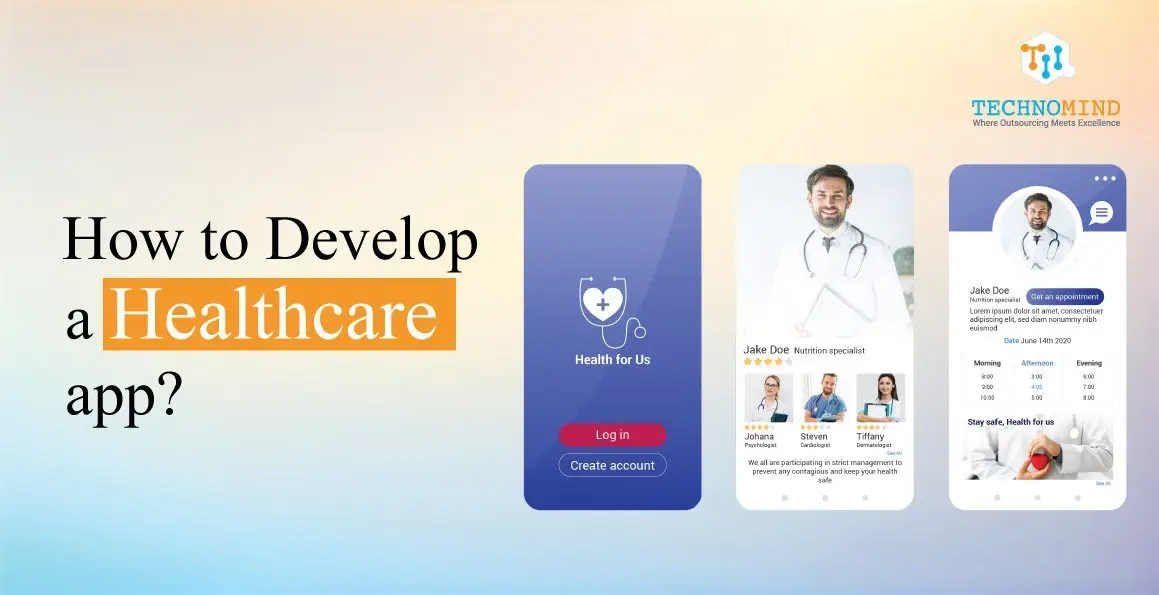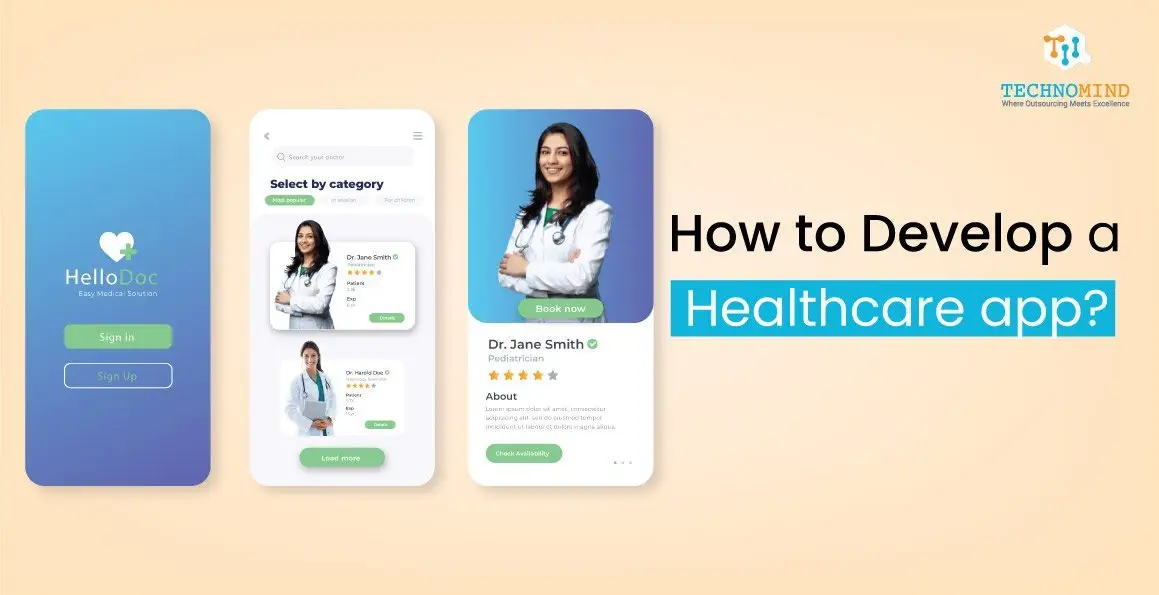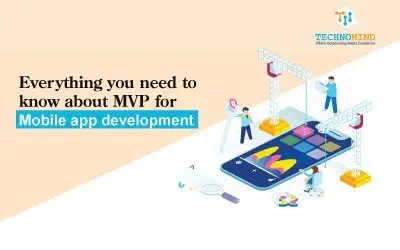Blog
How to Develop a Healthcare app?
Can you imagine a world where healthcare services are just a tap away on your smartphone? As technology continues to revolutionize various industries, the healthcare sector is no exception. The emergence of healthcare apps has transformed the way we perceive and access medical services. But have you ever wondered what it takes to develop such a sophisticated healthcare application?
Let’s explore the specifics of creating a healthcare app and identify the key processes needed.
What is an App in Healthcare?
A healthcare app is a software application designed to offer health-related services and information to users. These apps cater to a broad spectrum of needs, including health monitoring, remote consultations, appointment scheduling, medication tracking, and more. Essentially, they bridge the gap between patients and healthcare providers, providing a convenient platform for accessing essential medical resources.
How to Design and Develop a Healthcare app?
1. Ideation and Conceptualization: Begin by identifying the purpose and target audience of your healthcare app. Conduct comprehensive market research to understand the existing landscape and identify any potential gaps that your app can fill.
2. Define Features and Functionality: Based on your research, outline the essential features and functionalities your app will offer. These might include user-friendly interfaces, secure data storage, appointment scheduling, remote monitoring, integration with wearables, and more.
3. Compliance with Regulations: The healthcare sector is heavily regulated to ensure patient safety and data security. Ensure that your app complies with all relevant regulations, such as HIPAA (Health Insurance Portability and Accountability Act) in the United States or GDPR (General Data Protection Regulation) in the European Union.
4. User Interface and User Experience (UI/UX) Design: Create an intuitive and visually appealing interface that makes it easy for users to navigate and access various features. Prioritize user experience to ensure seamless interaction and positive engagement with the app.
5. Backend Development and Integration: Develop a robust backend system that can handle the storage and processing of sensitive patient data securely. Integrate APIs for third-party services, if necessary, to enhance the functionality of the app.
6. Testing and Quality Assurance: Rigorous testing is crucial to identify and eliminate any bugs or glitches before the app is launched. Conduct comprehensive quality assurance checks to ensure that the app functions smoothly across different devices and platforms.
7. Deployment and Post-Launch Support: Deploy the app on relevant platforms, such as the App Store or Google Play Store. Provide continuous support and updates to address any issues that may arise and to incorporate new features based on user feedback.
How much does it cost to develop a Healthcare app?
Determining the cost of develop a healthcare app can be a complex task, as it depends on various factors, including the app’s complexity, the development platform, the features and functionalities included, the development team’s location, and the time required for development. Let’s delve deeper into these factors to gain a comprehensive understanding of the costs involved in creating a healthcare app.
1. Complexity of the App: The complexity of a healthcare app can significantly impact its development cost. Basic healthcare apps with essential features like appointment scheduling, basic data storage, and user profiles will generally be less expensive to develop compared to more intricate apps that involve features such as AI-driven diagnostics, real-time monitoring, integration with wearables, and advanced data analytics.
2. Development Platform: The choice of development platform can also influence the overall cost. Developing a native app for both iOS and Android platforms may require more resources and time compared to developing a cross-platform app. Cross-platform app development using frameworks like React Native or Flutter can be a more cost-effective option, as it allows for the simultaneous development of both iOS and Android versions.
3. Features and Functionalities: The number and complexity of features integrated into the healthcare app play a crucial role in determining the development cost. Features such as telemedicine capabilities, electronic health record (EHR) integration, secure messaging, data encryption, and personalized health recommendations can significantly increase the overall development cost. Additionally, the inclusion of features that require integration with third-party services or APIs may add to the development expenses.
4. Development Team’s Location: The geographical location of the development team also impacts the overall cost. Development rates vary significantly based on the region, with North American and European development teams generally charging higher rates compared to teams in Asia or Eastern Europe. However, it’s essential to balance cost considerations with the quality of work and the team’s experience and expertise.
5. Time Required for Development: The time required to develop a healthcare app depends on the app’s complexity, the size of the development team, and any unforeseen challenges that may arise during the development process. Longer development periods can lead to increased costs, particularly if the development team charges on an hourly basis.
Considering these factors, the cost of develop a healthcare app can range from $10,000 for a basic app to over $100,000 or more for a complex app with advanced features. It’s crucial to allocate sufficient resources for not only the initial development but also for ongoing maintenance, updates, and potential scalability as the app gains traction and user base over time. Additionally, investing in robust security measures and compliance with healthcare regulations is essential to ensure data privacy and maintain user trust.
Conclusion:
Develop a healthcare app is a complex yet rewarding process that requires careful planning, adherence to regulations, and a focus on user experience. By following a systematic approach and integrating the latest technologies, it is possible to create a healthcare app that revolutionizes the way medical services are accessed and delivered. As technology continues to advance, the potential for healthcare apps to improve patient outcomes and enhance the efficiency of healthcare services remains significant.
Have an idea in your mind to develop a healthcare app? – We are here to help. Connect with us now.
Everything you need to know about MVP for Mobile app development
Every business nowadays want to expand their reach in digital world and doing that in a better way, one of the good option is to…
Mobile App Development for Start-ups – What, Why and How?
Mobile applications are becoming more and more essential to the expansion and success of organizations, especially startups. Since…
How Much Does It Cost to Develop An Expense Tracking App?
Who keeps a daily cost log in their pocket and keeps it open at all times. Additionally, this is not the time to keep an offline account of your costs…




0 Comments